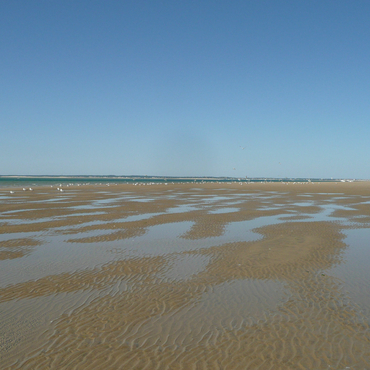
- Home
- The island of Cordouan
- An ever-changing naturak site
- The estuary, a source of life
The Gironde Estuary begins at the Bec d'Ambès, not far from Bordeaux. This is where the Dordogne River, which flows from the foot of the Massif Central, meets the Garonne River, whose source is in the Pyrenees. The pull of the Atlantic tides can be felt up to 150 km from the estuary's mouth, and it sometimes generates tidal bores, waves that flow up the estuary and its two rivers. An estuary is a living, changing environment, a vehicle that ferries seemingly inert substances produced by the natural erosion of mountains, riverbanks and river bottoms. Plants and animals that thrive equally in fresh, salt and stagnant water are particularly abundant. Certain species are able to live both in and out of water, depending on the season and the tides. Some species are migratory (sturgeons, eels, marsh birds and birds of prey), while others are resident (coypus, pond turtles, crayfish, otters and minks). Plants with poetic names, such as Angelica heterocarpa and fritillaries, flourish. Over time, populations established themselves on the hillsides and in the marshes, and slowly built up the estuary landscape. Today, relatively few vessels – whether for transport, fishing or pleasure boating – ply its waters. Within the estuary, inorganic material and living beings combine in unpredictable and ever-changing ways. Life is everywhere – in the midst of strong tides or in the safety of a harbour, on the surface or underneath the waves, buried in silt or tossed in the muddy estuary mouth – one finds microorganisms, algae, mosses, plants, shrimp, mollusks and fish. The current is ever-present, and changes direction with the tide. The water itself is cloudy and filled with matter, to the point that it is almost golden in colour. Whenever alluvia are deposited on a shoal, extending the bank towards the riverbed, or even forming a small island, new life develops, and plant and animal species adapted to flood conditions move in.


